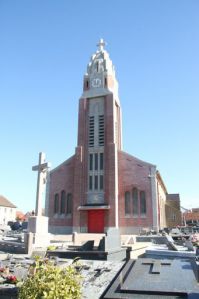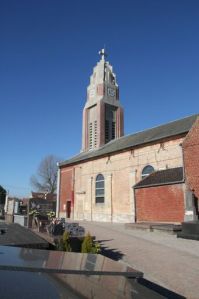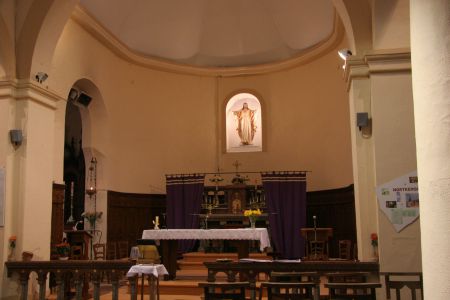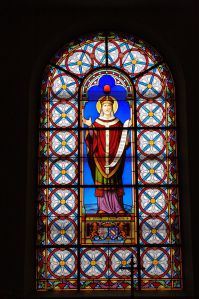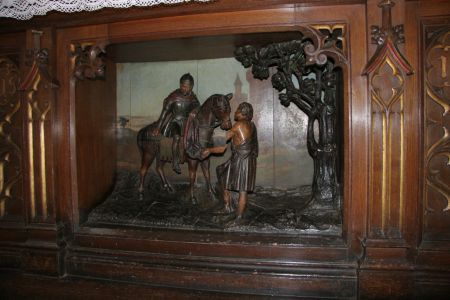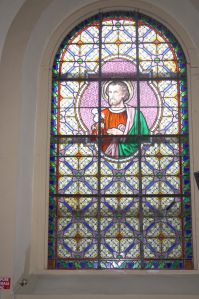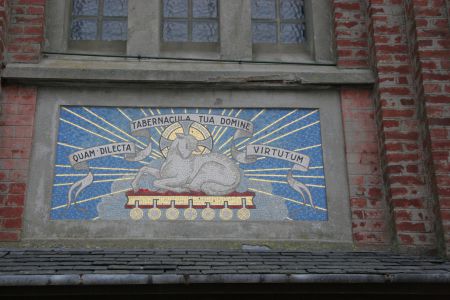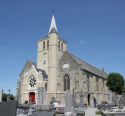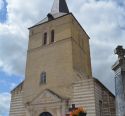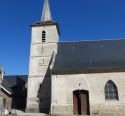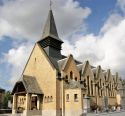Church | 1836 | Art deco | Catholic Church


Map
Opening hours
01 January - 31 December
Mon 10.00 - 17.00
Tue 10.00 - 17.00
Wed 10.00 - 17.00
Thu 10.00 - 17.00
Fri 10.00 - 17.00
Sat 10.00 - 17.00
Sun -
Religious offices
Description
In the 12th century the Count of Flanders, Philippe of Alsace, decided to dry out the lands by the excavation of ‘wateringues’ (drainage ditches) administrated by the lords, monks or superior authorities ( counts etc). There was an arrival of population and the organisation of a parish around the first church in Nortkerques which was bilt in 1269 by the Count of Guines.
During the 17th century, after the destruction of this first church by Henry IV during the battle for Artois in 1595, a new church was built with three naves, but the French Revolution came, and it was sold and dismantled to recuperate the materials.
The actual church dates from1836. It has a rectangular plan for the nave and side-aisles, and the sanctuary is narrower finishing with a three-sided chevet. Over the entrance a mosaic can be seen, probably from the Abbey of Wisques . The church has many objects mainly from the 17th century, such as the retable, but there is also a 16th century statue of Saint Martin and a bronze bell (1752).
In 1934, at the request of Father Flandrin, a bell tower was built in the Arts Deco style, the work of Roger Poyé ( an avant-gardiste architect) copying the belfry of the Officiers Service Building in the Port of Calais, and which has since been destroyed.
Gateway to the Opal Coast, the region of Audruicq/OyePlage offers an authentic countryside. Along the watergangs, around a chicory drying depot, or in the heart of the natural Reserve of the Platier d’Oye, go for a drive and have a moment of relaxation and discovery of a heart-warming territory.


